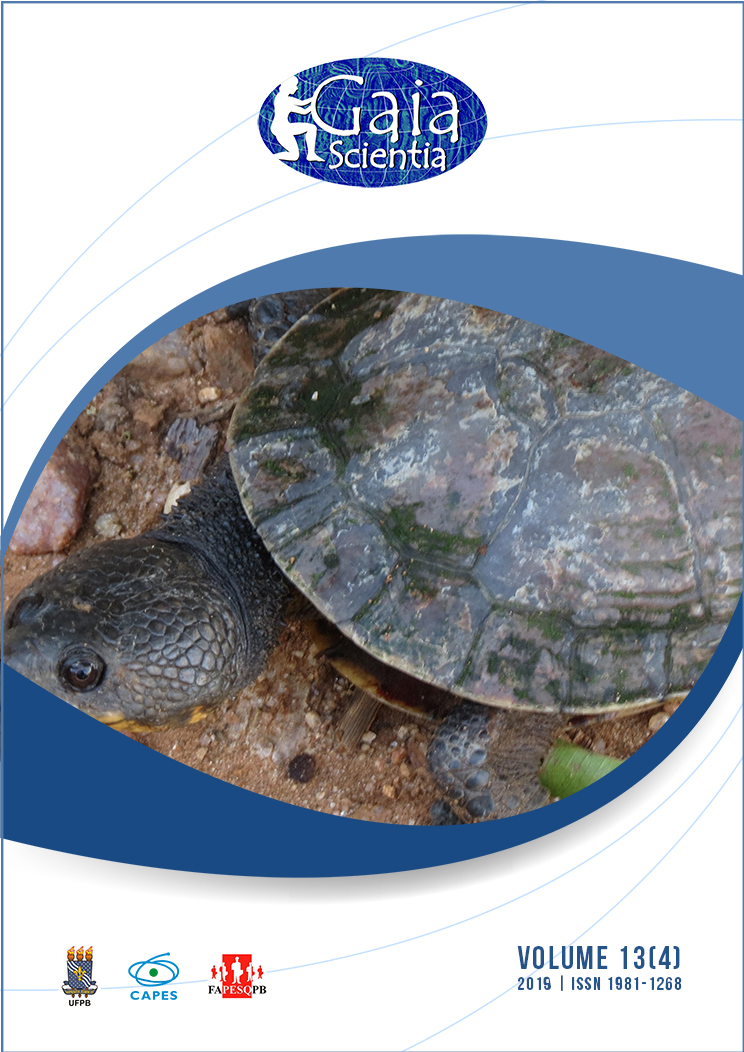A pesca de acari (Pterygoplichthys pardalis) na várzea do Baixo Amazonas, Pará, Brasil: aspectos estruturais e socioeconômicos
DOI:
https://doi.org/10.22478/ufpb.1981-1268.2019v13n4.48781Abstract
In the Lower Amazon, the species Pterygoplichthys pardalis, popularly known in the region as acari, is one of the ten main species of regional fisheries and, for this reason, the present work aimed to characterize the fishing of this species in three floodplain communities. Semi-structured interviews were conducted with fishermen to obtain data as well as to measure the total length (cm) of specimens. The acari fishing has been found to be important for both household consumption and the economy. Catches occur most frequently between July and November (ebb and dry season) using castnet. Acaris, unlike most Amazonian fish, are traded live and in units. In one of the communities is also sold as fish flour (named piracuí) manually produced. It was found that there is a significant difference (p <0.01) in the average length of acaris among the communities (F = 13; p = 2.67x10-6). The results achieved contribute to the understanding of how acari fishing is currently being developed in the study area and may help in the management and conservation of this highly important resource for the Lower Amazon.










